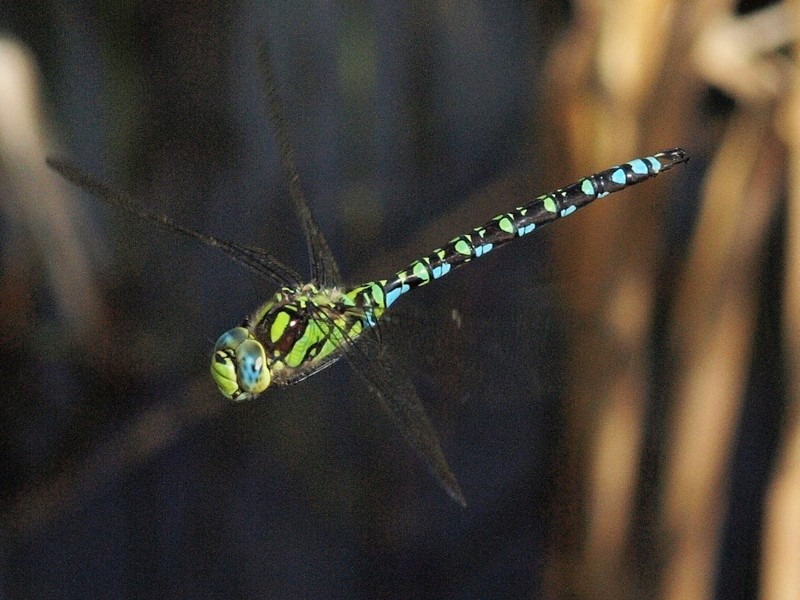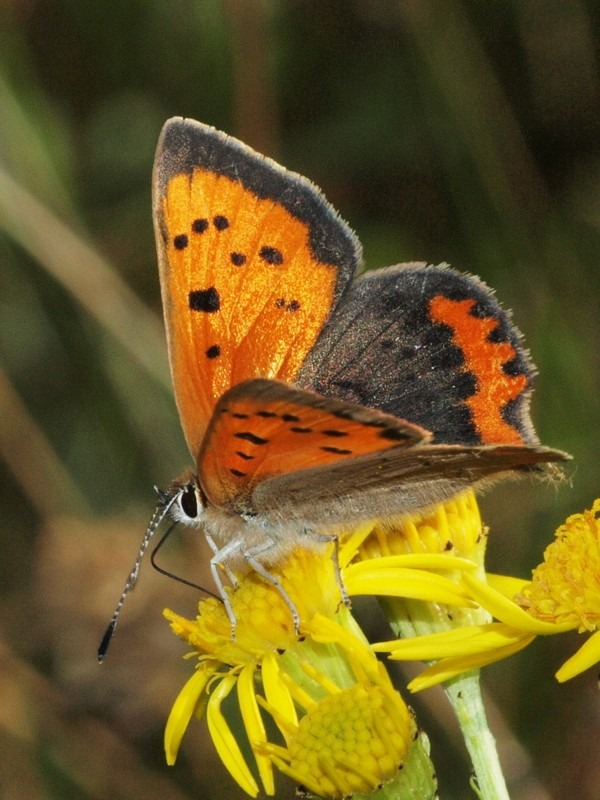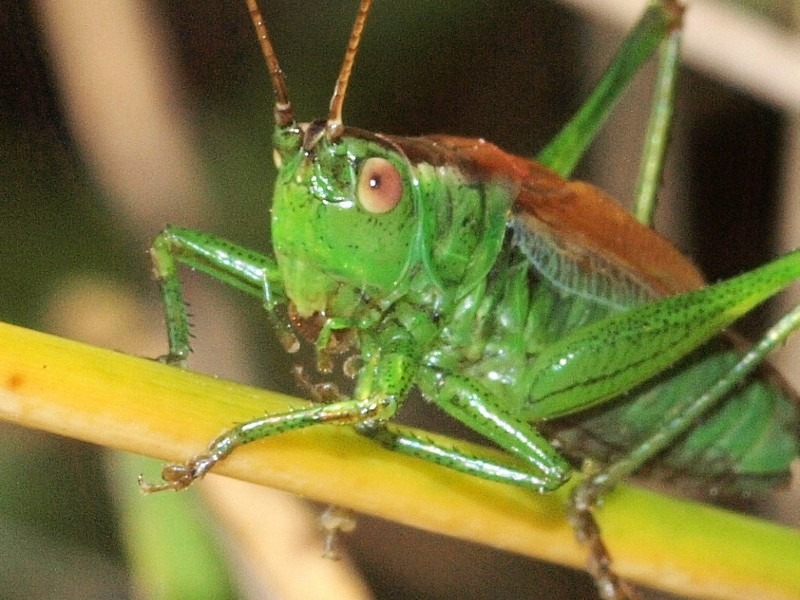Dr Phil Smith’s Wildlife Notes
September 2011
Unsettled weather including some hefty downpours characterised the first half of the month, with the beginnings of a much-needed rise in the dune water-table. However, this was largely negated by an unprecedented heat-wave from 27th, with record temperatures as high as 27oC by the beginning of October. Many of the shallower scrapes and ponds along the coast remained bone-dry, including Wicks Lake at Formby Point where visitors usually expect to feed the ducks!
Dragonflies continued to be thin on the ground, though a visit to my favourite Birkdale ponds on 4th was rewarded by sightings of six species, including two male Southern Hawkers. This magnificent and confident insect habitually comes over to inspect the observer, enabling me to take some flight shots at close range. Nearby, I spotted a hatchling Sand Lizard basking on a log, probably the first confirmed breeding record for Birkdale Green Beach.


Back in April, I reported the discovery of a new insect for the coast, the Slender Groundhopper. Things then went quiet but this month I started finding the next generation of adults, though in very small numbers. Early autumn is also a good time to look for our only coastal bush-cricket, the Short-winged Conehead. This species first colonised our salt-marshes but is now showing signs of moving inland and I was pleased to find a strong population of adults in a Birkdale frontal dunes slack. At the same site, Trevor Davenport and I photographed a Conehead nymph on the surprisingly late date for a youngster of 28th September. Grasshoppers are also a feature of our sand-dunes in autumn but one rarely finds all three Sefton species co-existing in the same place. A field inside the entrance to Ainsdale National Nature Reserve produced Field, Mottled and Common Green Grasshoppers, together with the related Common Groundhopper. This area of acidic grassland also supported many Small Copper butterflies nectaring on the unjustly maligned Common Ragwort, lots of the rather scarce Narrow Buckler-fern and a single plant of Trailing St John’s-wort, a regionally notable species which I hadn’t seen on the NNR before.

Compared with the coast, our agricultural hinterland is generally much poorer in wildflowers. However, a “conservation headland” on the edge of an arable field on Plex Moss contained masses of gorgeous fumitories. Not only was there an abundance of Common Ramping-fumitory, but also the much less frequent Tall Ramping and Purple Ramping-fumitories, the latter being listed as Nationally Scarce.

Painted Lady butterflies have been almost non-existent this summer so I was surprised to find one at Lifeboat Road, Formby, on 27th. This one didn’t pose for photographs but there was no such problem with several very tame Red Admirals on flowering Ivy at Ravenmeols late in the month. Until quite recently, this stunning butterfly was described as a migrant to our shores but it seems now to be hibernating successfully in Britain. Its English name is long-established, “Admiral” being first written down in 1699 as if it was already in common usage.

While photographing the Red Admirals, I could hardly miss the nearby 2m-high flower spikes of what was evidently a Mullein but not one that I recognised. It keyed out to Hungarian Mullein (Verbascum speciosum) which, if confirmed, would be the first record of this garden-escape “in the wild” not just for the Sefton Coast but for northwest England!
The first gale of the autumn, on 12th-13th, came from the south-west, not an ideal direction. Nevertheless, a good selection of seabirds was blown inshore, watchers from Ainsdale reporting 200+ Gannets, Arctic Skuas, Little Gull, Black Tern, Razorbill and several Leach’s Petrels, some of the latter flying along the beach in the late afternoon. The highlight of this movement, however, was two Sabine’s Gulls, these or another two of these much appreciated high-Arctic breeders also being spotted at Formby Point and Seaforth.
